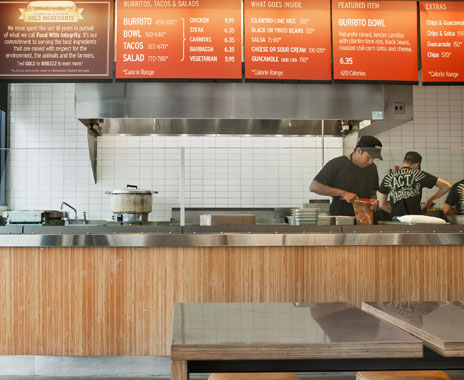Chipotle’s same-store sales fell 20.4 percent in 2016 as the restaurant continues to focus on improving performance by simplifying operations.
“I’m more confident than ever about Chipotle’s future,” Chairman and CEO Steve Ells said in a call reporting the 2016 financial results on Thursday, adding that the brand’s implementation of a food safety system, improvement of digital ordering channels, and expanded use of consumer data and analysis will position it to have a successful 2017 as the company continues to recover from an outbreak of foodborne illnesses linked to various locations.
In 2016, the brand’s profit dropped 95 percent while revenue fell 13.3 percent to $3.9 billion as the brand spent more on marketing, promotional spending, and other business costs related to the outbreak.
Ells says Chipotle is targeting comparable restaurant sales increases in the high-single digits in 2017, with 195 to 210 new restaurant openings.
In April, the brand will launch the largest advertising campaign in its history in an effort to build loyalty between the brand and its customers and show it can differentiate itself from the competition.
The company also coped with wage inflation and rising food costs—driven by a rise in avocado prices and waste related to food safety procedures.
Food costs were 35 percent of Chipotle’s revenue in 2016, and the brand says it expects that to be lower by at least 1 percent in 2017.
“Assuming no significant change in expected food inflation, we expect our full-year 2017 food costs will be in the low 34 percent range,” chief financial officer John Hartung said in the call. “This includes anticipated cost savings from negotiations with our suppliers and our restaurant managing food costs by reducing waste and optimizing food ordering, food prep, and their inventory.”
Hartung says wage inflation will likely continue at the 4 percent to 5 percent level in 2017 and the brand is targeting to offset this inflation through “better deployment of our salaried and hourly teams throughout the year.”
“Since 2012, we’ve had labor inflation totaling about 20 percent. We have only taken about 5 percent of a menu price increase in that time, and so we’ve eaten a couple hundred basis points worth of labor inflation, at least, maybe even more,” Hartung says. “And so the food cost is higher because of things like, we’ve had inflation (with) steak, we’ve invested in Food with Integrity, things like that. And because we are a little bit behind right now menu pricing, I would say our food is at an elevated level, we’ve been eating some of the higher food costs over time, same thing with the labor.
As for the fourth quarter, which ended December 31, Chipotle reported a revenue increase of 3.7 percent to 1 billion compared to the fourth quarter of 2015. Comparable restaurant sales for December were also up 14.7 percent, although they declined 4.8 percent over the entire quarter. In that time, Chipotle opened 72 restaurants, bringing the total to 2,250.
December’s rise in sales came after a stretch that saw comparable restaurant sales decrease 20.2 percent and 1.4 percent in October and November, respectively.
By Alex Dixon







